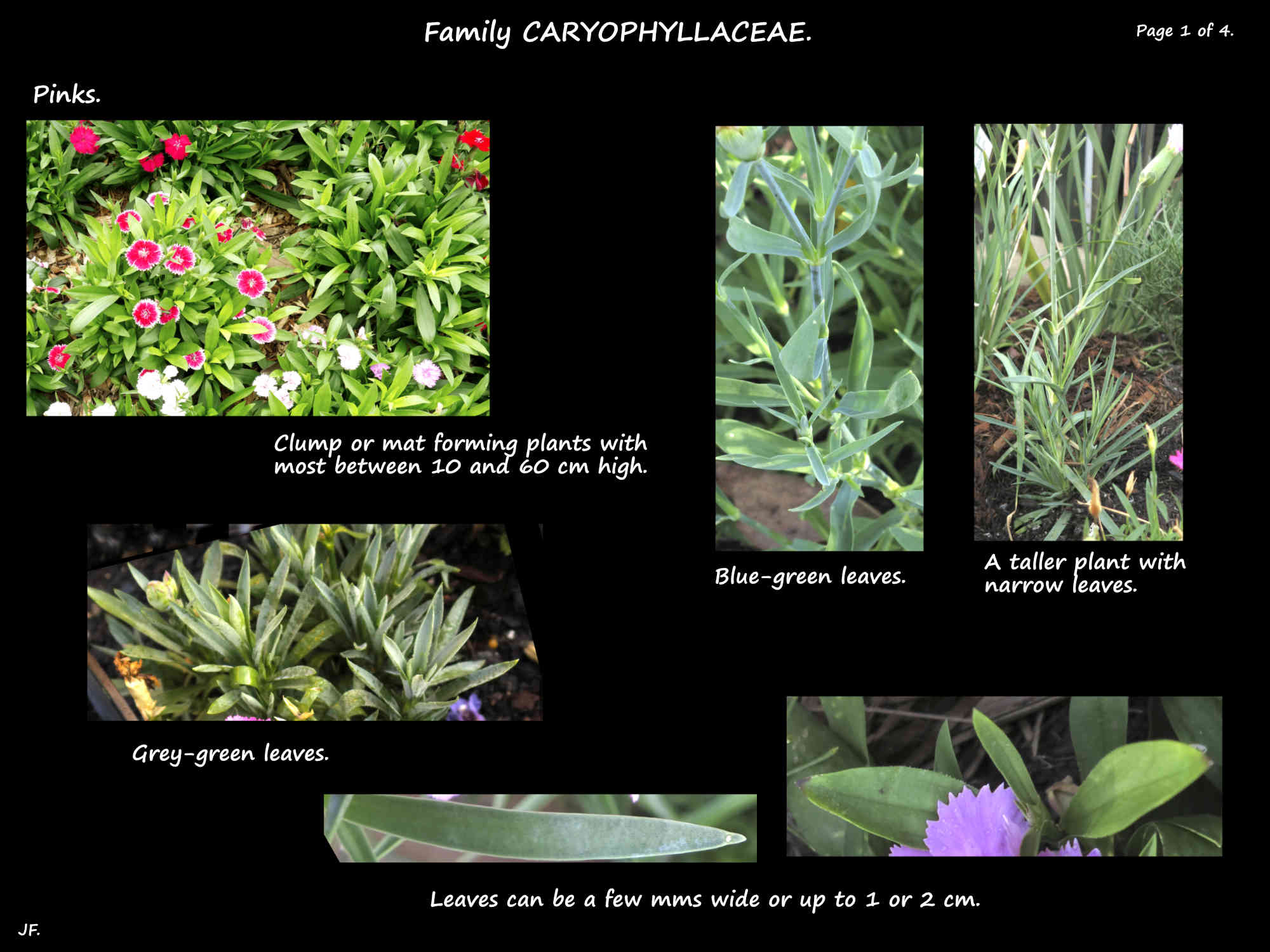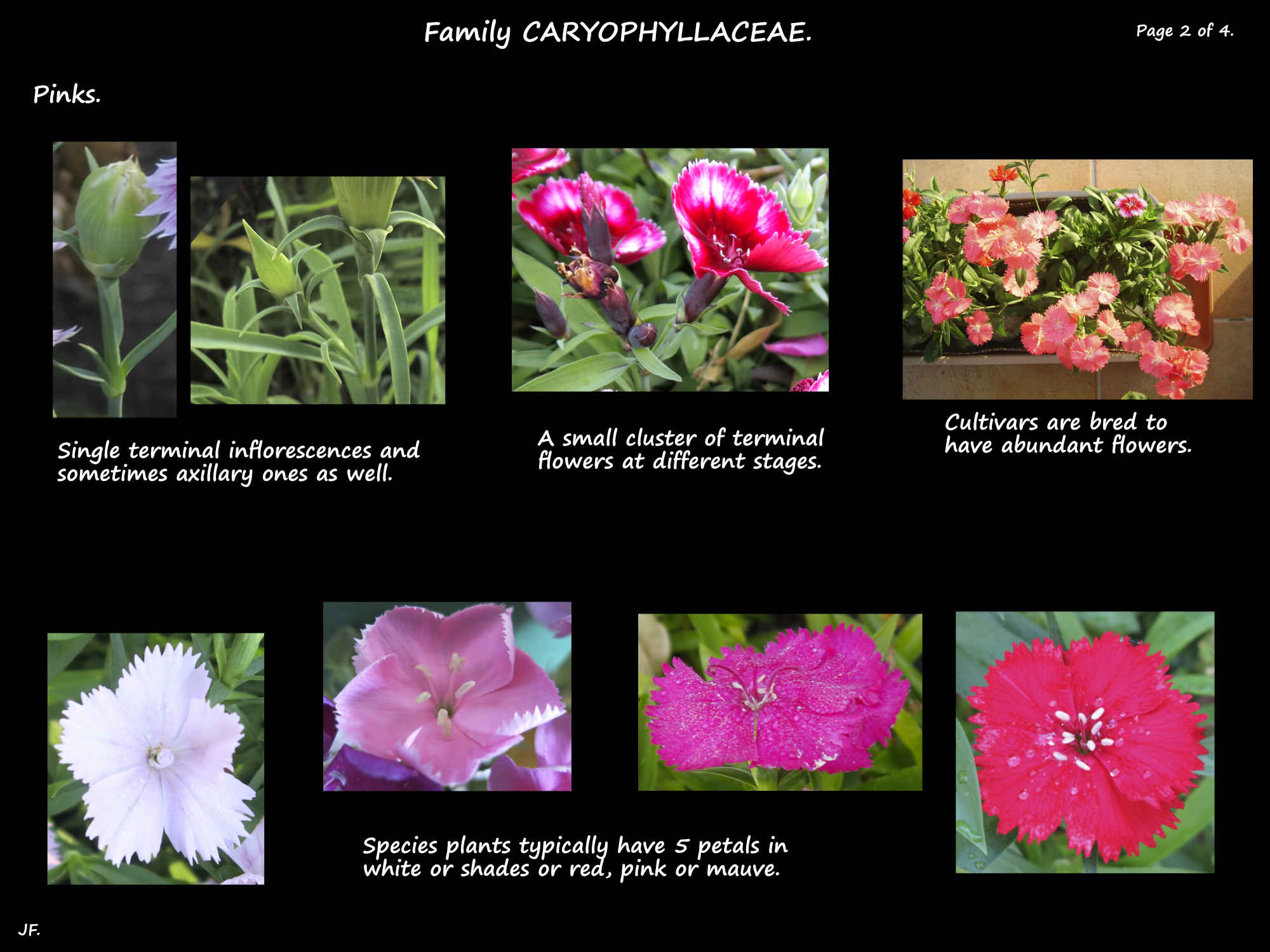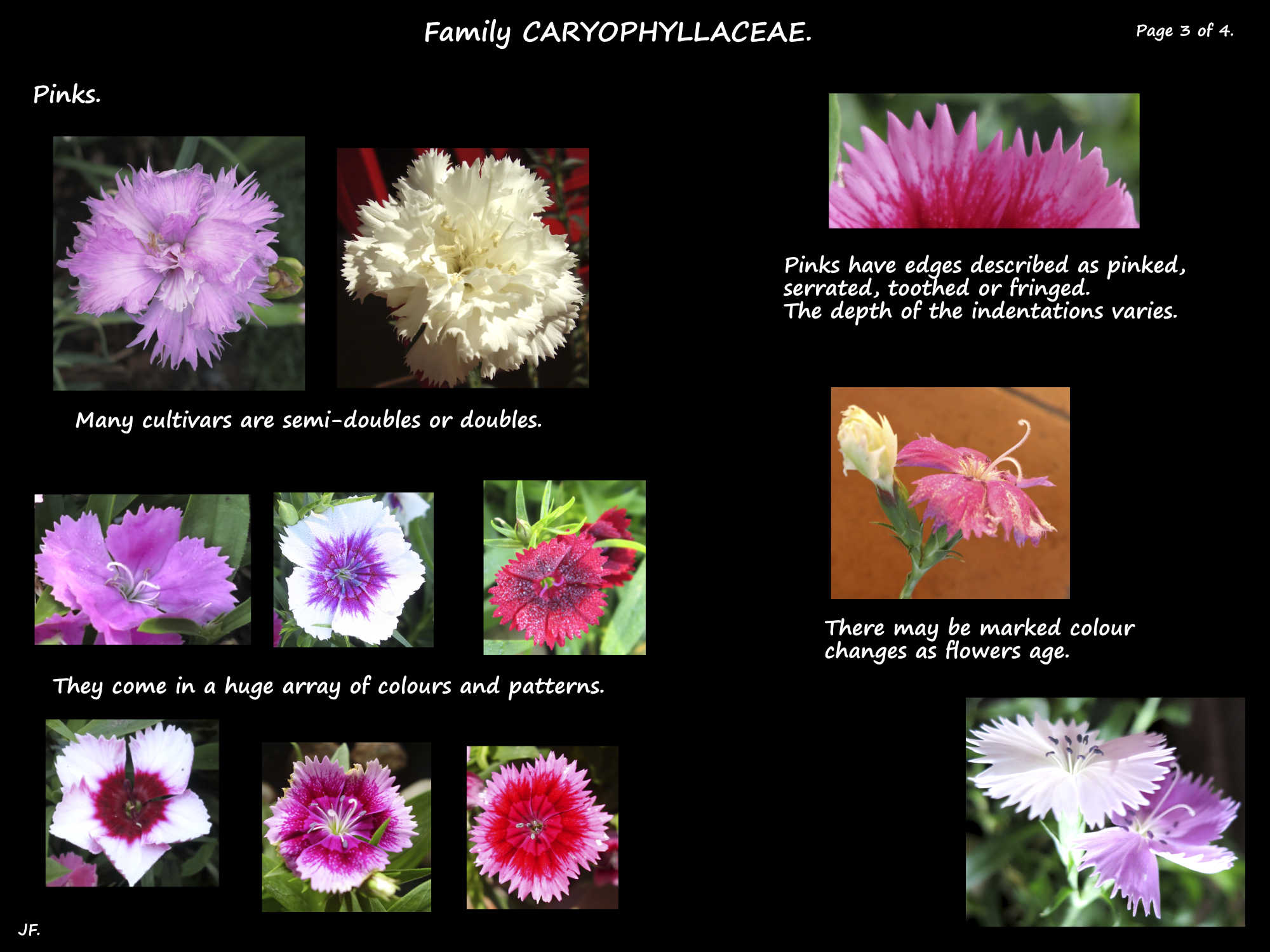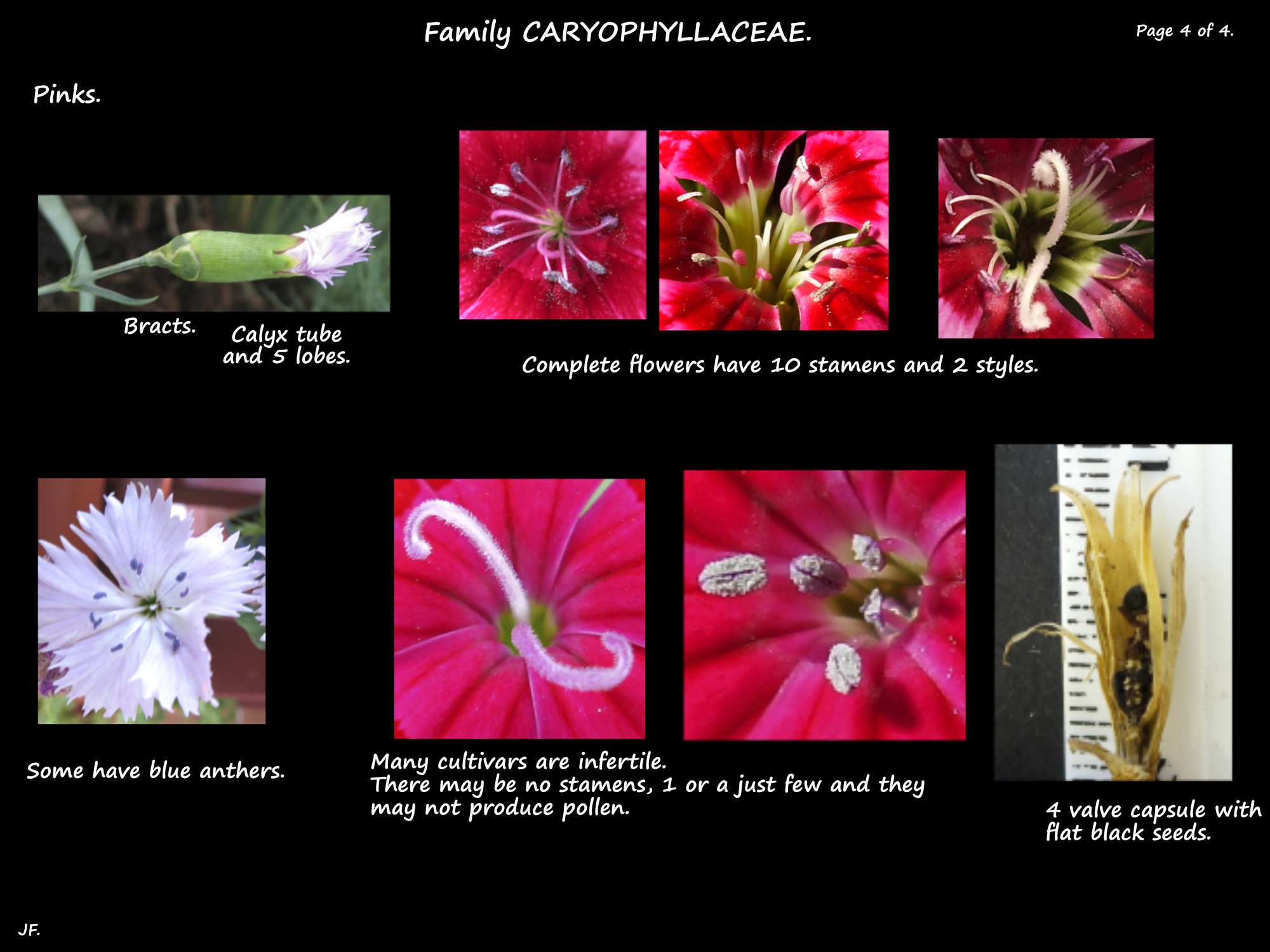Pinks.
The term ‘Pinks’ covers a large number of Dianthus species, hybrids and cultivars.
The International Dianthus Register and Checklist 2016 from the RHS lists nearly 44,000 names
of Dianthus cultivars (carnations and pinks).
They are also known as cottage garden plants and are widely used in borders, rockeries and as ground covers.
Some of the taller ones can also be used as cut flowers.
As a group they tend to be smaller plants than the carnations and have smaller flowers.
They are characterised by having serrated petal edges as if cut by pinking shears.
They are low growing, clumping perennials mostly between 10 and 50 cm high and up to 40 cm across.
The horizontal spread of some is greater than their height.
They have narrow green, blue-green or grey-green leaves.
Inflorescences can be a single flower or a few held above the leaves.
The small flowers are mostly 1 to 3 cm across and often fragrant.
They can be single, semi-double or double.
Pink is the most common natural colour but others are red or white.
Cultivars can be a single colour, bicoloured or have various markings in a deeper or different colour.
Petals may have a darker central eye, a circular ring, flecks, lines or a coloured margin.
Almost all the cultivars have Dianthus caryophyllus crossed with another species such as D. alpinus, D. chinensis, D. plumarius or D. gratianopolitanus.
Cultivars of any of these, whether registered or not, may also be a parent of another cultivar.
There are thousands of cultivars and hybrids many of which are very similar.
Some species are variable in appearance and one plant can have flowers with greatly varying patterns or even different colours.
The colours may change or fade as the flower opens and matures.
As an example of what a complete plant description looks like the following is taken from The United States Plant Patents book available from Google Books.
This has a description of the 2003 patent for the new Dianthus gratianopolitanus cultivar ‘Pixie’ – PP 13,578 P2.
It has 2 pages of text and a full page colour photograph.
It is available at https://books.google.com.
It describes how the plant was discovered or developed, gives a summary of its features, how it differs from it parent/s (‘Pixie’ was from a self pollinated cultivar ‘Sooty’), how it differs from one or more similar cultivars plus a coloured photograph and a detailed botanical description.
It ends with notes on its hardiness and disease resistance.
The botanical description covers of every part of the plant and includes measurements.
Colours of all parts are given with reference to the Royal Horticultural Society colour chart of 1995 which has 808 numbered and named colour chips.
Following is the description of the petals including the colour changes from starting to open until fully opened.
“Petals Quantity: Five in a single whorl.
Length: From base: About 3.8 cm.
Beyond calyx tube: About 1.4 cm. Width: At base: About 1 mm.
At calyx tube apex: About 4 mm. Beyond calyx tube: About 1.3 cm.
Shape: Roughly spatulate or fan shaped towards base. Apex: Rounded, emarginate.
Base: Attenuate. Margin: Emarginate giving a fringed appearance.
Texture: Velvety: sparse pubescence on upper surface; lower surface: glabrous.
Color:
When opening, upper surface 61 A: dappled center, 70A to 70B: towards base 145C to 145D; margin 70A to 70B.
When opening lower surface 75B to 75C: towards base 145C to 145D: margin 70A to 708.
Fully opened upper surface: 61A dappled center, close to 70B to 70C: towards base 145C to 145D: margin 70B to 70C; with subsequent development color becomes more intense than 6 IA.
Fully opened lower surface: 75C to 75D; towards base 145C to 145D: margin 70D.”
There are 15 references to the Colour chart for just the petals.
A few cultivars are very distinctive and easy to identify but most are not. Saying a particular cultivar has pink petals with a red centre really means nothing as it could cover scores of cultivars.
J.F.





